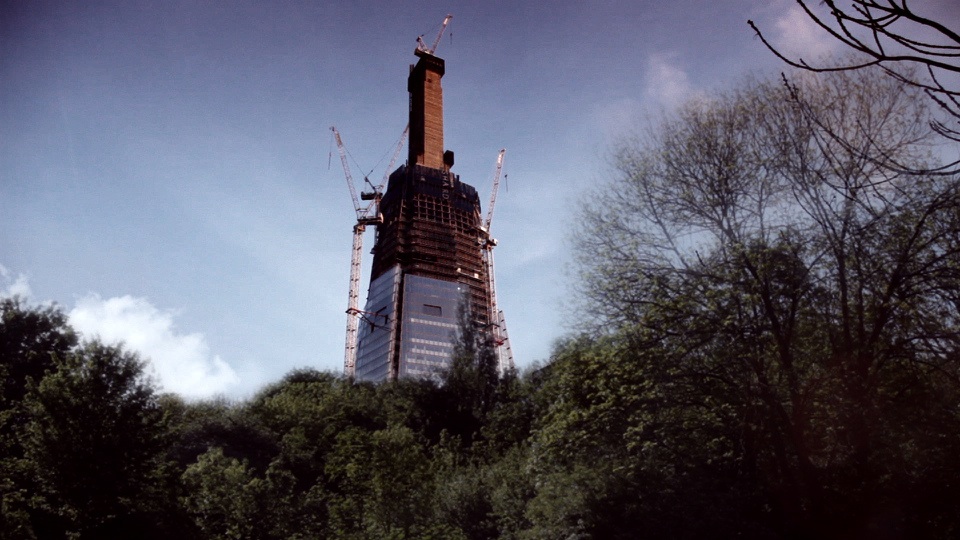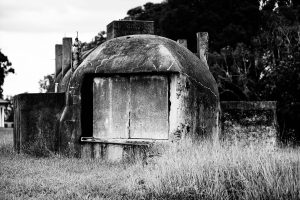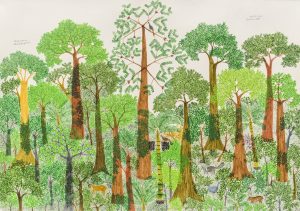
Once again this year, Dazed is partnering with Converse and the Whitechapel Gallery for the Emerging Artists Award, which offers a platform for emerging unrepresented artists under 35.
And continuing FAD’s support for the merging art scene we are running Q&A’s with all of the shortlist
here is the first one: Myles Painter www.mylespainter.com/
About Myles
This is how space begins, with words only, signs on the blank page”*
I work with film, video, sculpture and installation to produce work about the critical understanding of the discourse of architectural spaces, be they physical or theoretical. The physical architecture with which I am concerned is the kind of architecture that offers up stories of its history and present incarnation through an individual’s inhabitation and lived experience. My interest in theoretical architecture investigates a collective response and application of critical theories of architecture and its influence on the design of social and psychological space.
One of my main concerns is with the societal complexities and structural composition of a city. The appropriation of images and forms of the city through its use in cinema, photography and sculpture is key to my work. By re-editing this imagery into my own independent work I intend to represent a potential utopian or dystopian model for densely populated contemporary environments.
I see a strong link between the working processes of artists and writers and am currently concerned with building discursive and collaborative relationships with different practitioners to develop specific concepts and to better articulate those ideas.
At present I am investigating how the eschatological concept of ‘Apocalypse’ is manifested in contemporary culture and whether socio-political anxieties reflect or inform it. From this theory, as with the rest of my work, I aim to apply the information discovered through in-depth research and collaboration into works with alternative spatial and social narratives to determine the origins of the spaces we inhabit.
* Georges Perec, Species of Spaces
1.If you weren’t an artist, what else would you be?
Perhaps a historian, maybe an architect or film director, or, most probably a director of architectural-history films. But I guess I try to do those things in some shape or form anyway.
2. Can you tell us more about your work and what are the main ideas you would like to express?I make work about the critical understanding of architectural spaces, be they physical or theoretical. The physical architecture with which I am concerned is the kind of architecture that offers up stories of its history and present incarnation through inhabitation and lived experience. My interest in theoretical architecture investigates a collective response and application of critical theories of architecture and their influence on the design of social and psychological space.
At present I am investigating how the eschatological concept of ‘Apocalypse’ is manifested in contemporary culture and whether socio-political anxieties reflect or inform it. From this theory, as with the rest of my work, I am aiming to apply information discovered through in-depth research and collaboration into works offering alternative spatial and social narratives to determine the origins of the spaces we inhabit.
3. How do you start the process of making work?
I guess that I go with ideas that start to interest me, if I find myself watching lots of films or reading books on a certain subject matter then I start to question my own interest in that and try to develop that into work. The mediums I use generally come after that, but I seem to find time-based mediums the most communicative.
4. Do you consider the viewer, when making your work?
Yes, very much so, I always want my work to develop some sort of dialogue with its audience, I am in the belief that if people aren’t viewing my work then it’s failed. All my work has some sort of narrative to it that is about people, so it needs people to respond to it in order to continue that cycle. I also want to open my work up to interpretation. I think the workis successful if somebody goes away thinking something different to what I intended for the work to express.
5. Name 3 artists that have inspired your work?
Robert Smithson
Patrick Keiller
Georges Perec (Not really an artist, but a great inspiration nonetheless)
6. Name 3 of your least favourite artists.
I don’t really concern myself too much with artists’ work that I dislike.
7. What defines something as a work of art?
That’s quite a big question, something that I’m still asking myself. I’m not quite sure what would define something as a work of art, not after Duchamp anyway. I am interested in works that could be considered to cross the fringes of what an art-work actually is and subvert thier commercial potential as a tangible commodity.
8. In times of austerity, do you think art has a moral obligation to respond topically? Not really no, but inevitably art does. I think artists are always subject to restrictions and constraints so those frustrations can sometimes feed into the work. Even if an artist, writer etc. looks to the past or future we are always trying to answer questions about the present. Sometimes I find it best to question my own private concerns and open them up to an audience to see if they provoke any collective anxieties.
?
9. Anytime, any place – which artist’s body would you most like to inhabit?
I’d rather merge my body with the DNA of loads of other artists, like in The Fly, so that I became a massive amorphous art blob that slimed around the Turbine Hall as a living sculpture.
10. What is your favourite ‘ism’?
Cynicism
11. What was the most intelligent thing that someone said or wrote about your work?
Probably my art teacher at school who, after tearing pages out of my A Level sketch book, told me to ‘Work harder’
12. And the dumbest?
Probably anything I say about it.
?
13. Which artists would you most like to rip off, sorry, I mean appropriate as a critique of originality and authorship?
It’s not other artists that I like to appropriate, more like directors. I appropriate certain films as I feel that cinema is a medium that communicates immediately to its audience and we can all understand its language. Therefore films that express ideas more successfully than I feel I could I like to reinterpret into a form that articulates my specific concerns. Like my film ‘The Spectator’ that appropriates edited footage from the film ‘Two Minute Warning’ with original text by a writer collaborator Bella Szyszkowska placed as subtitles over the top. This film was made during a period where Hollywood was producing films that responded to fears about the Cold War. Therefore the film ends with the death of a sniper (whose identity is concealed throughout the film) who indiscriminately kills people at a football game, without him revealing reason to his actions to the police. Now these kinds of films would never be made today as the audience is invariably given a reason to the actions of the characters involved, so for that reason I was interested in continuing the narrative and providing a story to his character after the film had finished. I’m not sure that fully answers the question, but its not the originality and authorship part of appropriation that I’m concerned with.
14. Do you care what your art costs? State your reasons!
Yes. I need to be able to financially support myself so I can continue to make work. I can’t say that I am doing that very well at the moment as I have to rely on my freelance work to live, but it is an important part. I do however find it hard to see my work as a commodity, such as my film works, I want to deliver them to as wide an audience as possible, which is where viewing them for free on the Internet comes into use. But I also want to deliver a gallery or site-specific experience that you can only get from viewing the works in the right environment, so therefore sales will have to come into it in commercial galleries. But if the fiscal properties of a piece of work were more important than the subject of the work itself then I would have to say that would become a problem…unless that was what the work is about.
15. If Moma and the Tate and the Pompidou wanted to acquire one of your works each, which would you want them to have?
Any would be good, like I said before my work requires an audience to complete it, so any opportunity like that would be incredible.
16. What’s next for you?
I have mentioned before I am working with the concept of Apocalypse, so I am currently in development making a feature called ‘END-TIME’ all about that idea. Also I am showing a collection of artist/writer collaborative works called ‘Grander Designs’ at PAMI (Peckham Artists Moving Image) in and around Peckham in September.
Find out more about The Dazed/Converse Emerging Art Award Here









